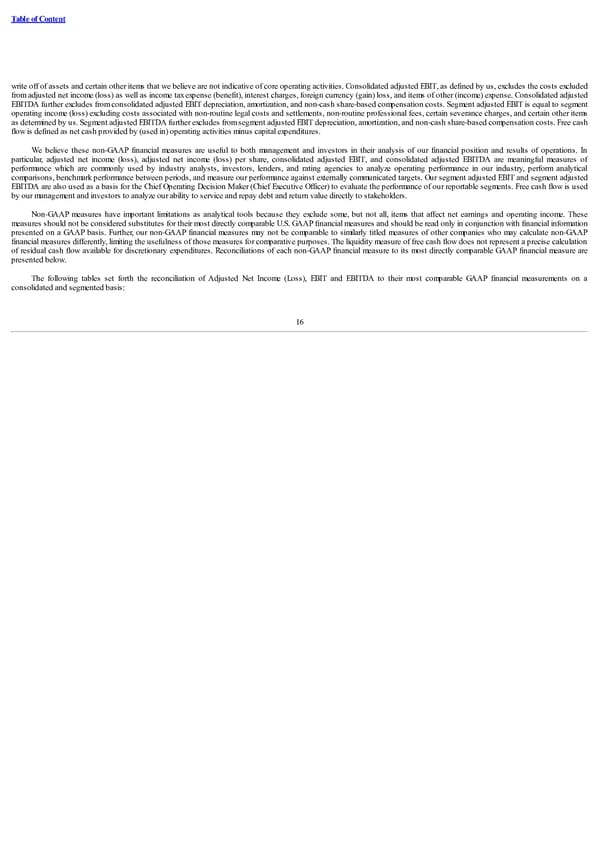Table of Content write off of assets and certain other items that we believe are not indicative of core operating activities. Consolidated adjusted EBIT, as defined by us, excludes the costs excluded from adjusted net income (loss) as well as income tax expense (benefit), interest charges, foreign currency (gain) loss, and items of other (income) expense. Consolidated adjusted EBITDA further excludes from consolidated adjusted EBIT depreciation, amortization, and non-cash share-based compensation costs. Segment adjusted EBIT is equal to segment operating income (loss) excluding costs associated with non-routine legal costs and settlements, non-routine professional fees, certain severance charges, and certain other items as determined by us. Segment adjusted EBITDA further excludes from segment adjusted EBIT depreciation, amortization, and non-cash share-based compensation costs. Free cash flow is defined as net cash provided by (used in) operating activities minus capital expenditures. We believe these non-GAAP financial measures are useful to both management and investors in their analysis of our financial position and results of operations. In particular, adjusted net income (loss), adjusted net income (loss) per share, consolidated adjusted EBIT, and consolidated adjusted EBITDA are meaningful measures of performance which are commonly used by industry analysts, investors, lenders, and rating agencies to analyze operating performance in our industry, perform analytical comparisons, benchmark performance between periods, and measure our performance against externally communicated targets. Our segment adjusted EBIT and segment adjusted EBITDA are also used as a basis for the Chief Operating Decision Maker (Chief Executive Officer) to evaluate the performance of our reportable segments. Free cash flow is used by our management and investors to analyze our ability to service and repay debt and return value directly to stakeholders. Non-GAAP measures have important limitations as analytical tools because they exclude some, but not all, items that affect net earnings and operating income. These measures should not be considered substitutes for their most directly comparable U.S. GAAP financial measures and should be read only in conjunction with financial information presented on a GAAP basis. Further, our non-GAAP financial measures may not be comparable to similarly titled measures of other companies who may calculate non-GAAP financial measures differently, limiting the usefulness of those measures for comparative purposes. The liquidity measure of free cash flow does not represent a precise calculation of residual cash flow available for discretionary expenditures. Reconciliations of each non-GAAP financial measure to its most directly comparable GAAP financial measure are presented below. The following tables set forth the reconciliation of Adjusted Net Income (Loss), EBIT and EBITDA to their most comparable GAAP financial measurements on a consolidated and segmented basis: 16
 Form 10-K Page 20 Page 22
Form 10-K Page 20 Page 22